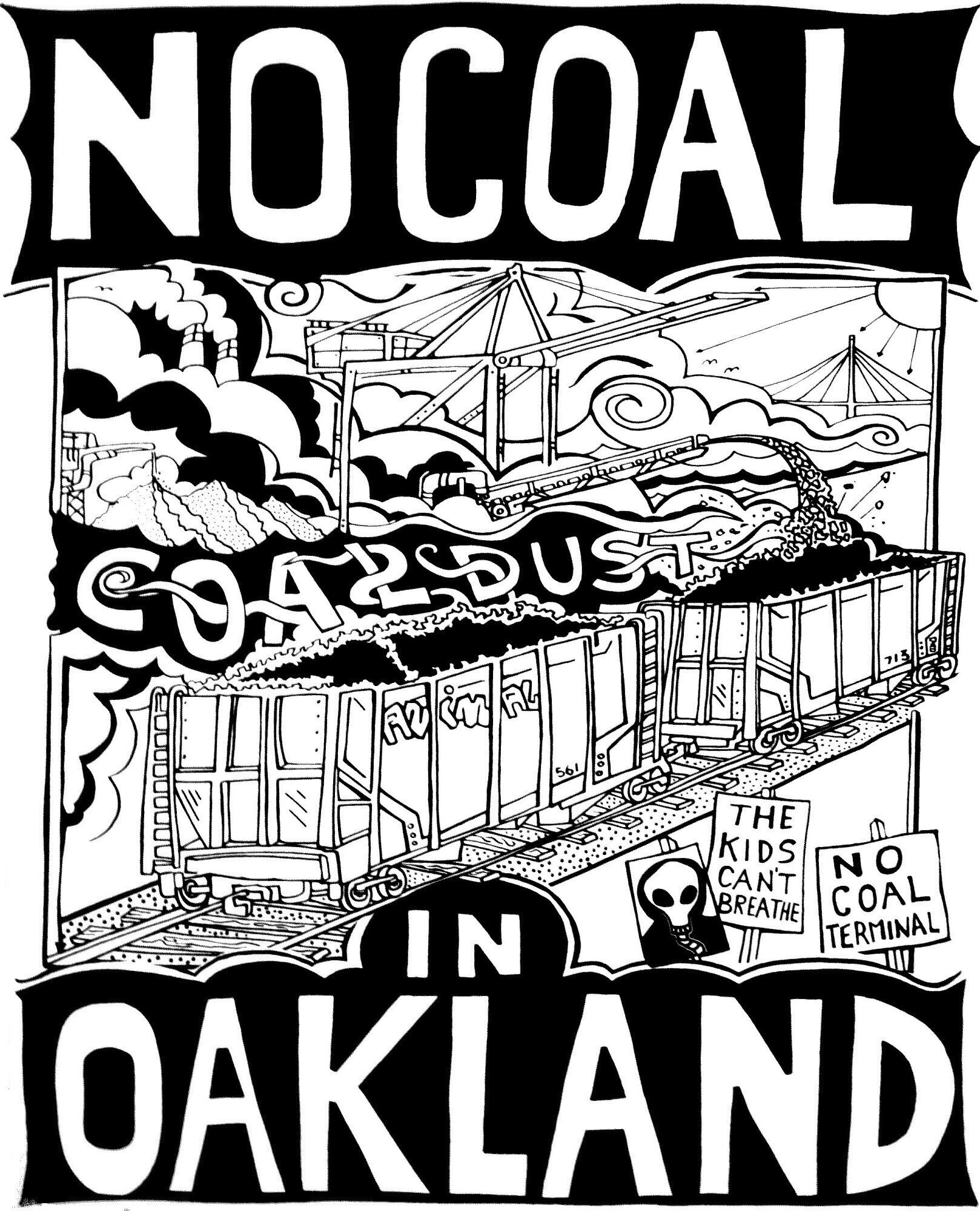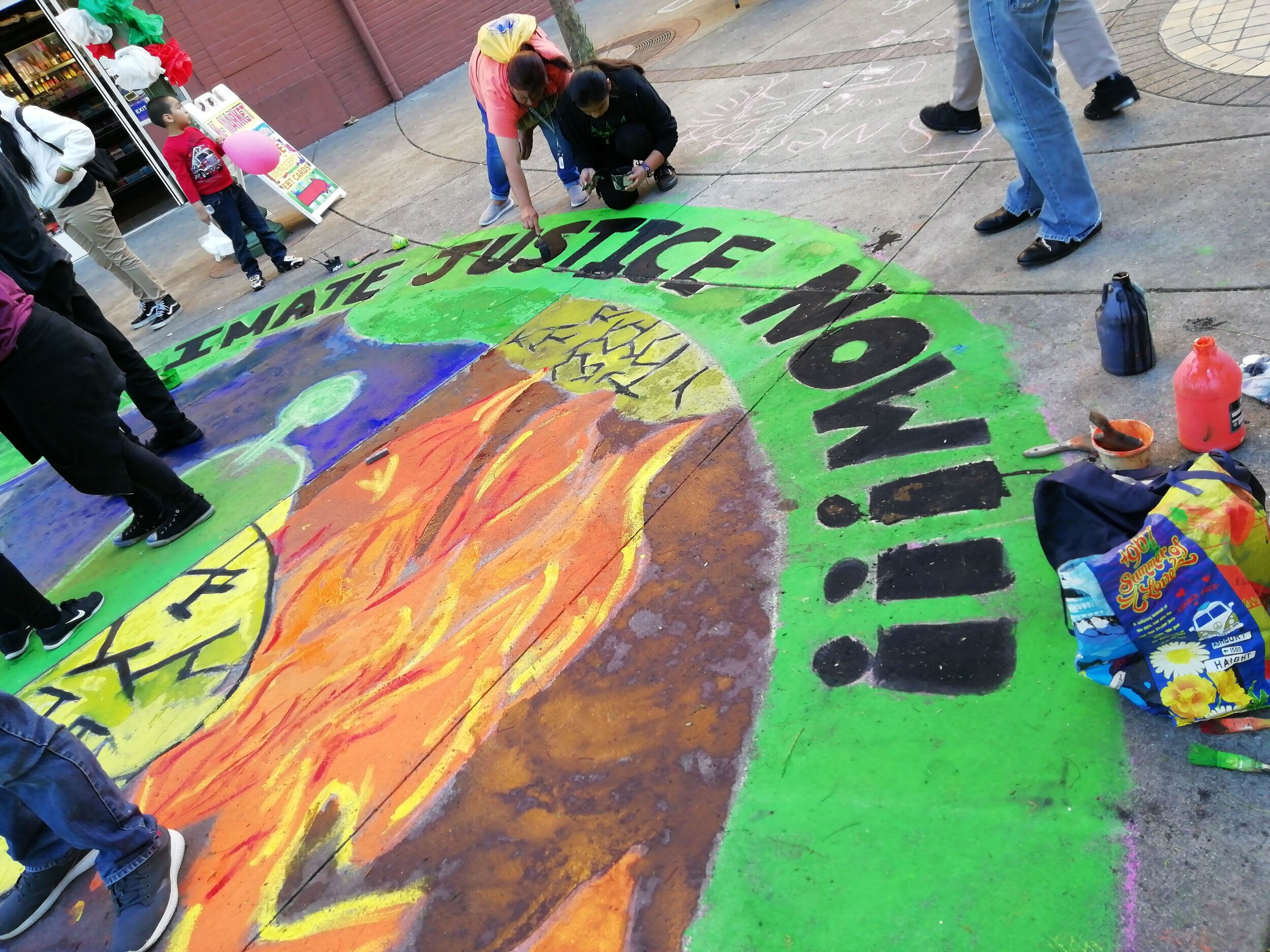What is the conflict?
A group of developers plan to build a coal terminal at the foot of the Bay Bridge in West Oakland as a re-development project of the decommissioned Oakland Army Base, in the San Francisco Bay Area of California. “No Coal in Oakland” is a collaborative anti-coal campaign organized by diverse organizations of environmentalist and social justice activists who oppose the construction of such a terminal and to prevent any coal from passing through Oakland. In 2016, a historical decision of the Oakland City Council banned the storage and handling of coal in the city. A legal battle started.
In 2016, the historic Grand Lake Theater, designated as one of the top ten vintage theaters in the US, celebrated the City Council decision banning coal from the city.
Photo: No Coal in Oakland
Why is this a special conflict?
No Coal in Oakland unites social justice and environmentalism in a successful mass-mobilization effort. The coal plant is perceived as both a climate destroyer and as well as a health risk for the community. The No Coal in Oakland campaign is therefore an example of how social justice, environmental justice and climate justie are increasingly melting together. This can be seen in the colors and diverse cohorts of the movement. Further support came from workers unions, faith communities, and the city council. The previous history of justice movements in Oakland provides strength to the movement. Since 1999, the local organizations shut down an incinerator, a polluting yeast plant, and pushed for the management of toxic soils. The US Environmental Protection Agency (EPA) situates Oakland at the core of the social and environmental justice movement.
Overview of West Oakland, the Port of Oakland and the location of the proposed terminal, at the right. The port of Oakland is the main port of container ships in the West Coast of the United States.
Photo: BRL
What is the role of art?
The movement started to draw attention through the work of art from the very beginning. The first time local newspapers were reporting the start of No-Coal in Oakland was in a street demonstration accompanied by a “Dumping Coal” performance and the presentation of poems during the first action. In public events, poems and performances often led by children, and visual media addressed the public, decision makers, and the main developer. A local political artist donated a poster design for the No Coal in Oakland campaign that was printed on t-shirts, posters and banners, displayed on houses around the city, and projected onto emblematic buildings. Cultural workers and singers from the Occupella collective rewrote popular songs that everyone could learn and sing at public events and demonstrations. When we asked activists how important the role of art was, they highlight their relevance throughout the timeline of this case.
In this conflict, art supported activism in different ways:
Education: With artworks, complex dynamics can be conveyed in an understandable and engaging manner. Often, artistic interventions were led by children, many of them girls of color. Their direct and simple message was powerful and compelling. This promoted learning about the facts of the case among the public at large and expanded the movement.
Creating Social Cohesion: In a movement characterized by a wide range of demographics and political leanings, art facilitated a strong group bonding and group identity. Image-based t-shirts were made to support identification with the group. Singing and dancing allowed broad participation which further created a sense of belonging by having a fun with the other members of the movement.
Participation: Artistic practices and pieces enhancing participation in decision making. Banners, performances and poems were critical in the expression of discontent, and in the activists’ request to the City Council to act against the project.
For more information
The Transformative Effects of Art for Anti-Coal Activism in Oakland. Source: Sanz, T. & Labajos-Rodriguez, B. 2021
Check out the No-Coal Oakland website and the creative actions of Youth vs. Apocalypse.
Also, follow our social media and check our publications (Please contact us if you cannot gain access to the papers):
Overcoming crises of representation? Arts in anti-coal struggles in Colombia and California. A case study for the Dialogue on Democracy of the Global Working Group “Beyond Development” by Beatriz Rodriguez-Labajos.
Does artistic activism change anything? Strategic and transformative effects of art in anti-coal struggles in Oakland, CA . A research paper in the journal Geoforum, by Teresa Sanz and Beatriz Rodriguez-Labajos.
On Sacrifice Zones and Spaces Between Art and Academia. An Interview with Teresa Sanz on the Clamor Blog.
Last updated: February 2022






